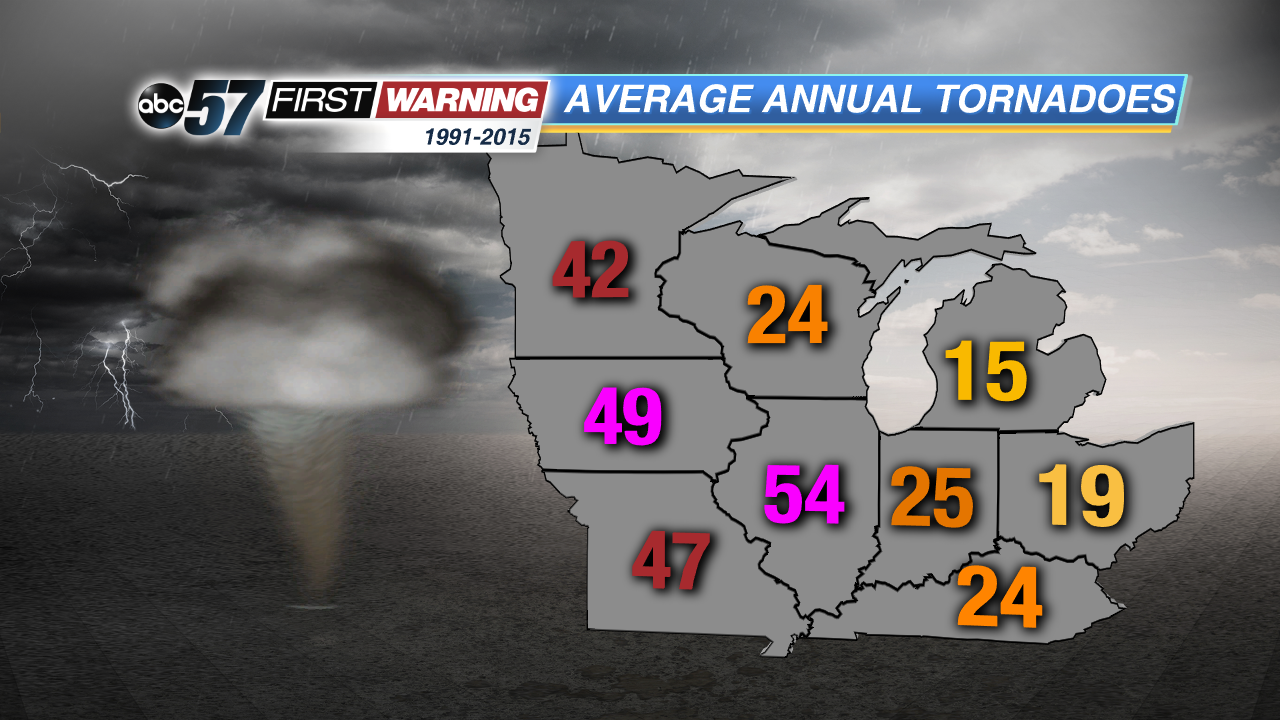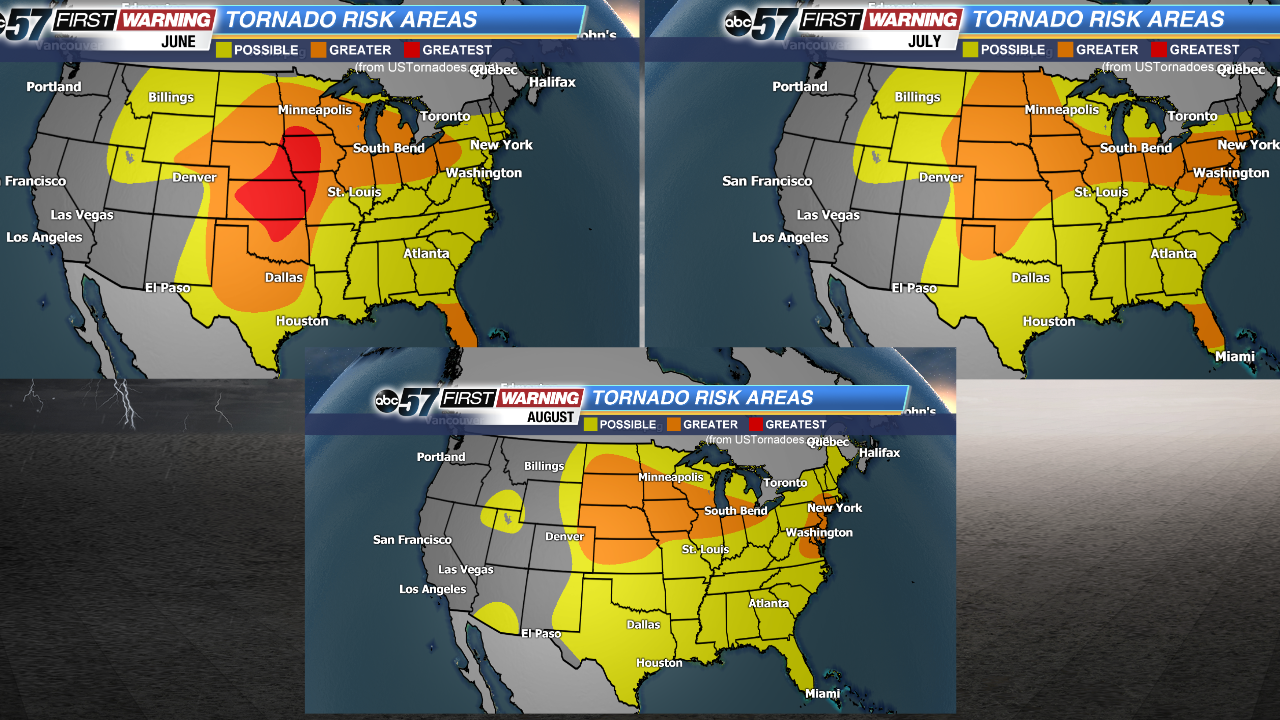Quiet for now, but severe weather threat rises substantially by May, June
Posted: Mar 19, 2019 11:31 AM EST
You may have heard that 2018 was a "down" year for tornadoes in the United States. Technically speaking, that's true. We had a below normal year for total number of tornadoes, number of violent tornadoes and fatalities from tornadoes. However, there were still thousands of severe weather occurrences throughout the year. There were 1,169 tornado reports, 4,610 large hail reports and 13,206 high wind reports across the country. Those numbers are quite high. Some of those reports were from right here in Michiana, where we had numerous wind damage reports, a handful of large hail reports and a couple tornado reports. And they occurred at various times throughout the year.
Looking at Indiana and Michigan as a whole, there were 72 large hail reports, 550 wind damage reports and 29 tornado reports in 2018. Both states saw less tornadoes than normal, but still registered quite a bit of severe weather in a "down" year.
How many tornadoes should we see in a typical calendar year? Based on data from 1991 to 2015, Indiana should see 25 and Michigan should see 15. Those numbers may not seem staggeringly high, but it only takes one tornado hitting your town to make the year seem awful. If you do a little math, Indiana should see a tornado every two weeks, on average. Of course, we know that isn't the case, but it puts that "25 tornadoes per year" value into perspective.
We know tornadoes can occur at any time of the year, but when should we be most concerned? Based on history, every month from March thru August features legitimate tornado chances in Indiana and Michigan. The ingredients for tornadoes in Michiana best come together from mid-April thru early September.
Each of those months place Michiana in the "greater" risk category (level 2 of 3 according to U.S. Tornadoes). Put simply, those five months offer the best conditions for tornadic development in Indiana and Michigan. Michiana is never included in the level 3 of 3 "greatest" category, however.
Let's break those numbers down even further for Northern Indiana, far Southwest Lower Michigan and Northwest Ohio. Based on data between 1980 and 2010 from our local National Weather Service, the months with the highest number of tornadoes are May, June, July, and October. Each of those months saw at least 32 tornadoes touch down across the Northern Indiana, Southwest Lower Michigan and Northwest Ohio between 1980 and 2010. June saw the most tornadoes during that 30-year period with 71! The only months that were overly quiet were January, February, September, November, and December.
We can even get into what time of day the region typically sees tornadoes. Let's again use National Weather Service data for the Northern Indiana, Southwest Lower Michigan and Northwest Ohio region from 1980 to 2010. Most tornadoes occurred between 1 p.m. and 11 p.m.. The absolute "peak" hours for tornadoes were 4 p.m. to 8 p.m.. That 4-hour window alone featured more than 47% of all tornado touchdowns in this region during that 30-year period.
Of course, we know severe weather includes large hail and damaging winds, not just tornadoes. And both of those are capable of causing substantial damage as well. Large hail occurs most often from late April thru early July. Damaging winds are most common from late May thru early August. There's no perfect method for predicting what an given severe weather season will bring. However, based on what we found by diving into the numbers, it's very important to always be prepared and have a plan in case severe weather strikes. Once the calendar flips to April in less than two weeks, severe weather season will officially begin.






















